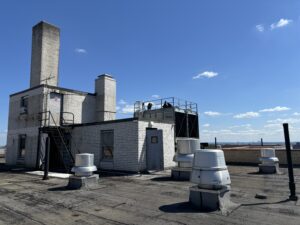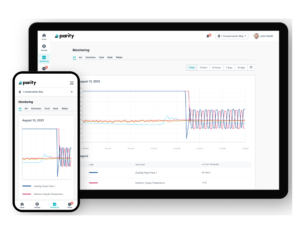
Modern buildings generate massive amounts of data from HVAC systems, water usage, occupancy patterns, and more. But data alone isn’t enough. The key is to turn that data into actionable insights to improve efficiency, reduce costs, and enhance resident comfort.
That’s where data-driven HVAC optimization comes into play. By continuously monitoring a building’s HVAC performance and using real-time analytics, inefficiencies can be identified.
Maintenance needs can be predicted, and adjustments can be automated to save money and energy.
Heating and cooling systems are one of the largest energy expenses in residential buildings, often accounting for nearly 50% of total energy use. Without real-time monitoring, buildings may overheat, overcool, or run equipment inefficiently. That leads to wasted energy and unnecessary costs.
With data-driven HVAC optimization, buildings can reduce energy waste by utilizing software that makes automatic control adjustments based on real-time conditions.
Equipment lifespans can be extended by preventing overuse and catching small maintenance issues. Utility bills can be lowered when HVAC equipment only runs when necessary, rather than operating on outdated, fixed schedules.
At the same time, resident comfort remains a priority. Smarter controls can eliminate sudden fluctuations and uneven heating or cooling. That means fewer complaints from residents.

Traditional HVAC maintenance follows a fixed schedule or responds to failures after they happen. This means that systems may receive maintenance too late, after damage is done. Maintenance can be done too early, wasting time and resources.
Proactive maintenance changes the game by using real-time data and historical trends to detect subtle shifts in performance before a breakdown occurs.
By continuously analyzing HVAC data, predictive systems can flag equipment inefficiencies, prevent unexpected downtime, and reduce emergency repairs.
If a boiler starts running cold, ventilation system begins overworking, or a chiller shows signs of strain, building managers can take action before the problem escalates. This reduces maintenance costs, improves system reliability, and prevents disruptions for residents.

Parity remotely controls and optimizes HVAC systems to guarantee utility cost savings for multifamily residential buildings and hotels, with no upfront investment.
We help buildings reduce their energy waste, lower operational costs, and monitor their HVAC systems. By continuously monitoring HVAC systems, Parity can identify inefficiencies, optimize system performance, and send real-time alerts to building managers before issues become problems.
With Parity, buildings can:
By embracing real-time data and cutting-edge technology, buildings that work with Parity can unlock significant cost savings and long-term efficiency gains.
To learn more about how Parity is bringing advanced HVAC technology into the residential space, email contact@paritygo.com. You can also visit our website to learn more.